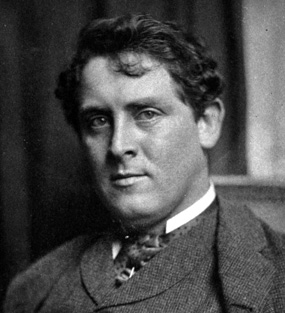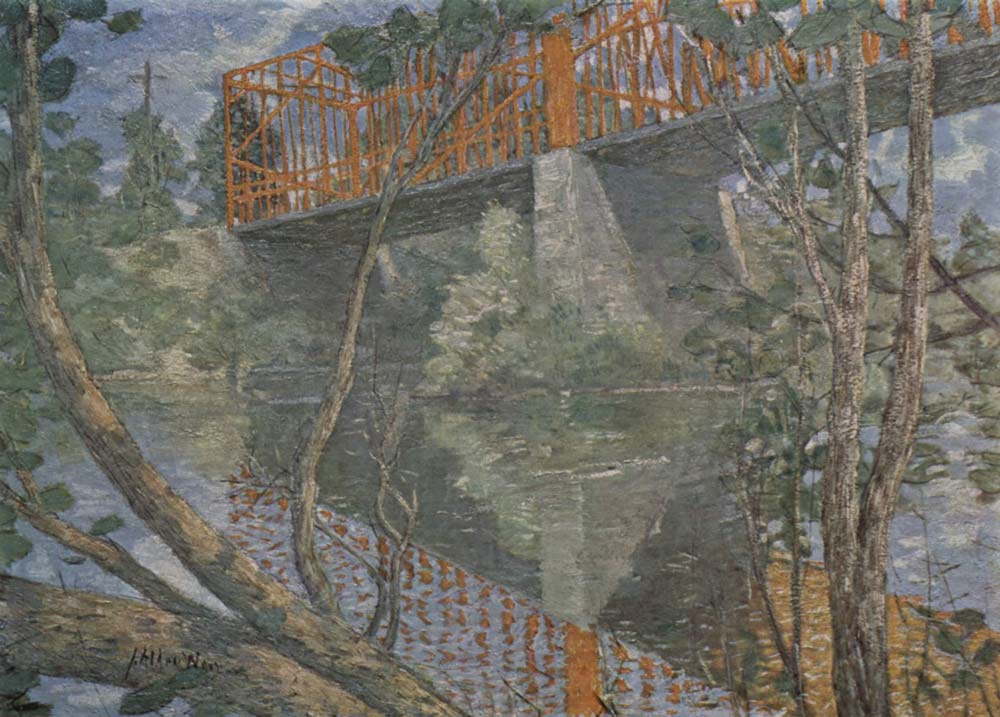| Julian Alden Weir | |
|---|---|
 |
|
| Born | August 30, 1852 West Point, New York |
| Died | December 8, 1919 (at age 67) |
| Nationality | American |
| Education | National Academy of Design, École des Beaux-Arts, Jean-Léon Gérôme |
| Movement | Impressionism |
| Field | Painting |
| Works | View Complete Works |
Julian Alden Weir (1852-1919) was an American painter of the Impressionist school. He was part of a loose grouping of American artists known as The Ten; they put on their own exhibitions of their artworks after having become disillusioned with the world of professional art. Weir was briefly president of the Association of American Painters and Sculptors, and later, held the same post at the National Academy of Design.
Personal life
Weir was born into something of an artistic family: his father, Robert, was a drawing professor at West Point Military Academy, while his brother, John, was a prominent landscape painter. Julian himself traveled to Paris in order to study at the renowned Ecole des Beaux-Arts. Here, he met Jules Bastien-Lepage and was confronted for the first time by Impressionist art – for which, at first, he expressed strong distaste. In later life, he became the owner of two Connecticut farms, one of which, at Windham, remains in the family’s ownership.
Artistic style
 Despite his youthful rejection of Impressionism, Weir gradually became reconciled to the movement as he grew older. The Manet-like still life paintings of his young adulthood were influenced by Manet as well as Whistler, whom Weir met in London in the late 1870s. By the early 1890s, he had become much more enthusiastic about Impressionist techniques and was using the style regularly himself. Nevertheless, Weir sometimes experimented with moving away from the bright shades commonly associated with Impressionism, producing more nuanced works, showing fine appreciation of tone and shadow.
Despite his youthful rejection of Impressionism, Weir gradually became reconciled to the movement as he grew older. The Manet-like still life paintings of his young adulthood were influenced by Manet as well as Whistler, whom Weir met in London in the late 1870s. By the early 1890s, he had become much more enthusiastic about Impressionist techniques and was using the style regularly himself. Nevertheless, Weir sometimes experimented with moving away from the bright shades commonly associated with Impressionism, producing more nuanced works, showing fine appreciation of tone and shadow.
Notable artworks
Among Weir’s more significant early works is the somewhat gloomy Still Life with Allium and Amber Beads from the late 1870s. However, he is better known for his later Impressionist paintings. Many of these took as their subject the farms which he owned in Connecticut. A well-known example is his 1905 painting Upland Pasture, which is notable for its subtle use of light and shade, as well as for its eye-catching illusion of depth. Of his more traditional portraits, Lady in Front of a Fan Window from the late 1890s stands out for its sympathetic treatment of the subject.